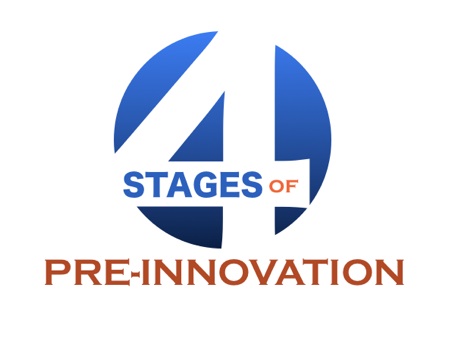 Here are four stages of pre-Innovation that I feel are critical to accomplish real marketing innovation. I have experience using the 4-stage process and continue to use it to implement innovative thinking. Begin with stage 1 and work your way through. You will find out that it actually works and the structure will help your team think about new ideas and to fit them into the pre-planning of the project. In my opinion, pre-innovation starts with a thinking and organizational process that fascilitates clarity and promotes new ideas.
Here are four stages of pre-Innovation that I feel are critical to accomplish real marketing innovation. I have experience using the 4-stage process and continue to use it to implement innovative thinking. Begin with stage 1 and work your way through. You will find out that it actually works and the structure will help your team think about new ideas and to fit them into the pre-planning of the project. In my opinion, pre-innovation starts with a thinking and organizational process that fascilitates clarity and promotes new ideas.
1. The Project Goal: This is probably the simplest of all the stages. Just ask yourself, If the initiative is to be successful what has to occur? This is your project goal. In order to move forward and take advantage of this process effectively, you must answer this question before you move on to stage 2. If you skip stage 1, you will end up straying off course creating a plan that doesn’t fit the goal or eventually coming back and answering the question.
2. Determine The Criteria: Here you must ask your team if there are certain criteria within the project initiative that must be included along the way? Are there things that you cannot do? What is your budget? What is the timeline? Who are the key players involved in the project? Are there other departments that are to be included? What tools and resources do you have available to you? What tools and resources that you don’t have are required? These are just a few questions that will help determine the framework of the project.
3. Start Brainstorming: Once you outline the project goal and criteria, it’s time to start the creative brainstorm process. This is where you want to listen to anything and everything that fits within stage 1 and 2. Sometimes even the ideas that don’t make sense at first glance actually end up being the best ideas in the end. My suggestion here is to listen thoroughly to everything and do not discount any ideas in this stage.
4. Write The Brief: The brief includes what I call the Who, What, When, Where, Why and How? It’s called a brief for a reason. It’s a short description that outlines all key components and even unknowns that are to be included in the project. Why do you write this? Good question. The brief includes all the key information in one document and allows the creative team to fully understand what the project is about. This becomes very important when you actually get to the execution stage. The brief serves as the blueprint for the project.
Yourbrandexposed.com is designed to look at digital with an eye into the future with a creative, innovative marketing angle. A digital-business perspective for marketers!
